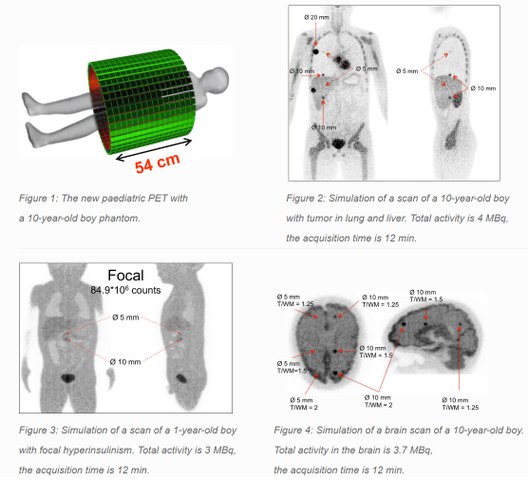The new paediatric TOF-PET: a simulation study
Children are the most challenging and vulnerable nuclear medicine patients due to great differences in their height, weight and physical development. They are more sensitive to consequences of the radiation dose expose than adults and have a higher risk to develop metastatic disease. In order to avoid or at least significantly reduce any risk during examinations, pediatric patients need a suitable diagnostic system that is as fast, as safe and as accurate as possible. Nowadays, there is no a commercial medical imaging modality especially dedicated for children.
The project aims to evaluate performance of a new pediatric TOF-PET scanner that combines the most recent achievements in radiation detectors, electronics and data processing methods. It is based on monolithic LYSO scintillators coupled to recently developed digital SiPM photodetectors in dual-sided configuration. A distinctive feature of the new pediatric PET is its 150 ps TOF resolution which allows to obtain images of low noise and high contrast. The novel pediatric PET aims to make examinations of children extremely fast, safe and precise.
The figures below show the recent simulation study results performed with voxelized phantoms of children of different age. The results show that the new paediatric PET is able to obtain high quality images in short acquisition times and with ultra-low doses (10-fold reduction).
Researcher: Ekaterina Mikhaylova
